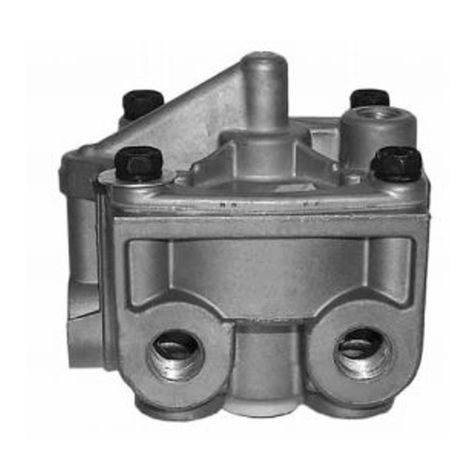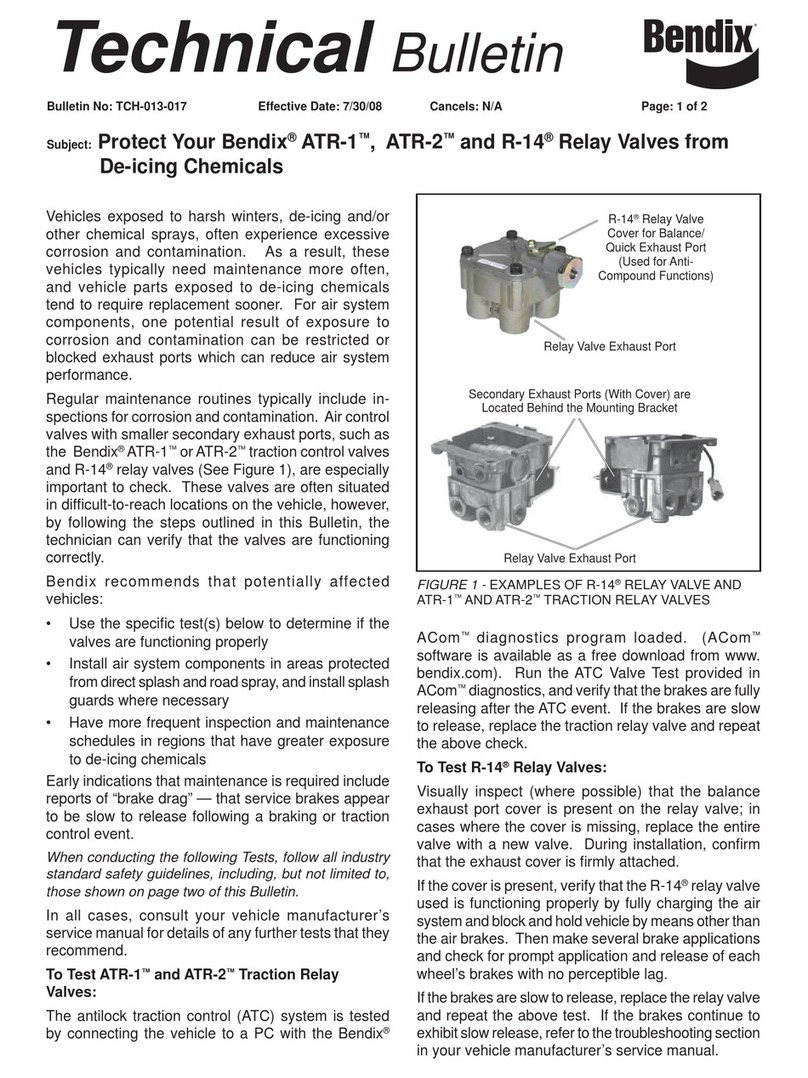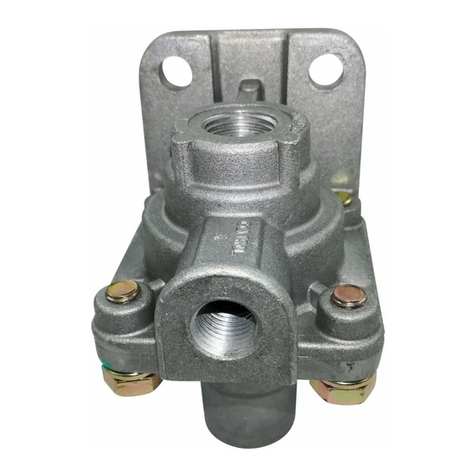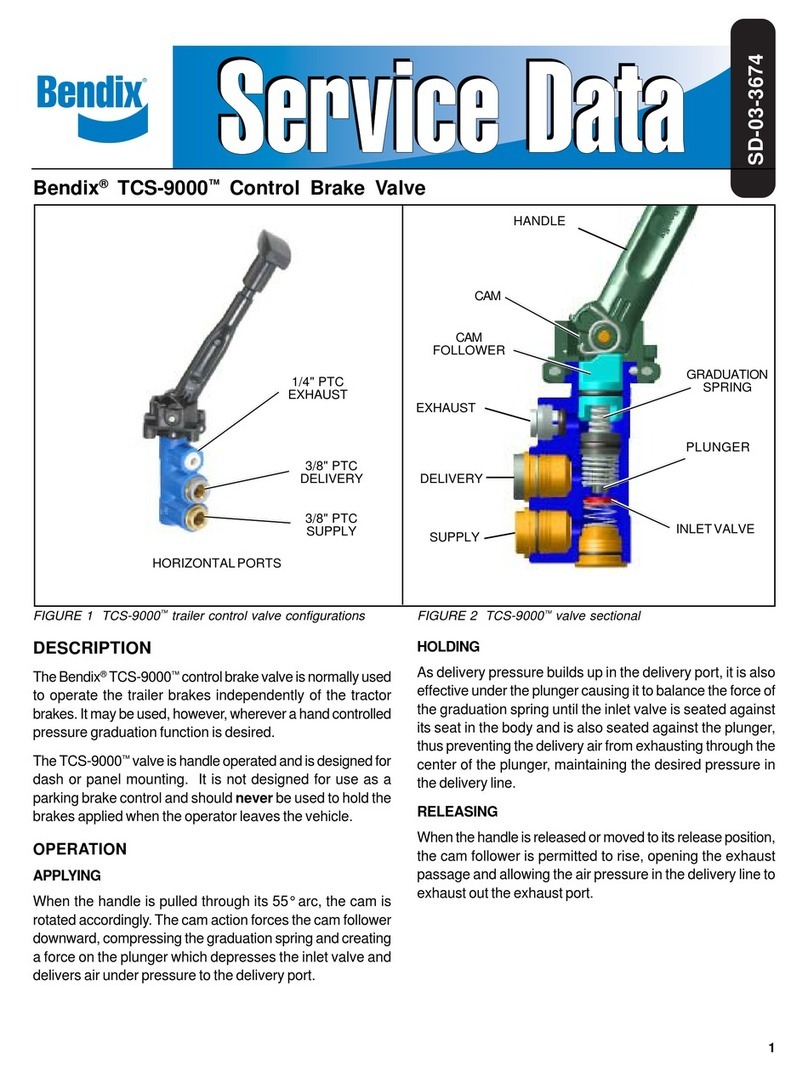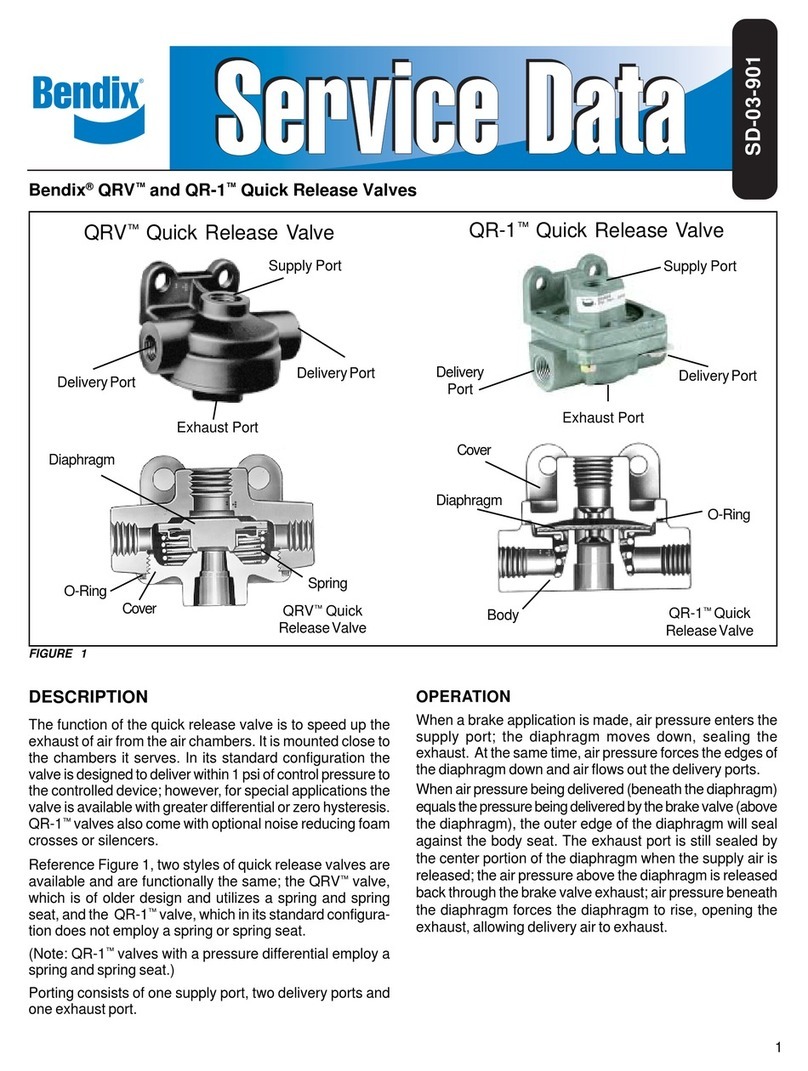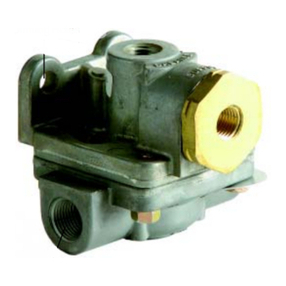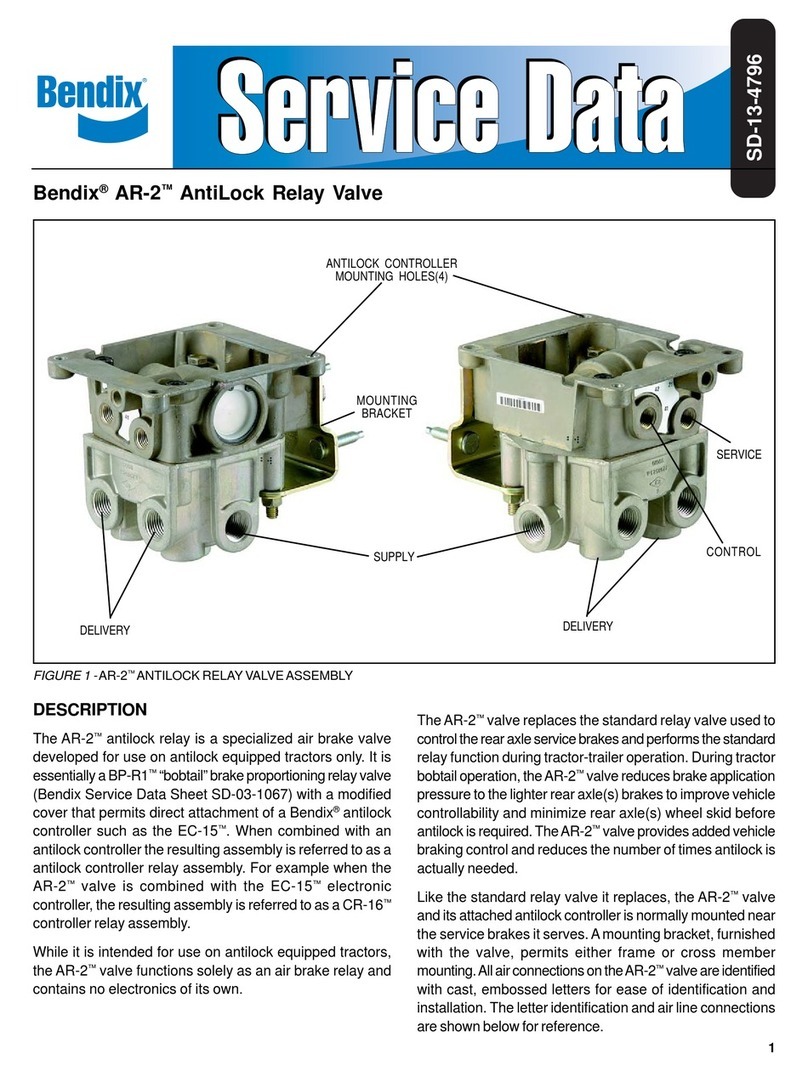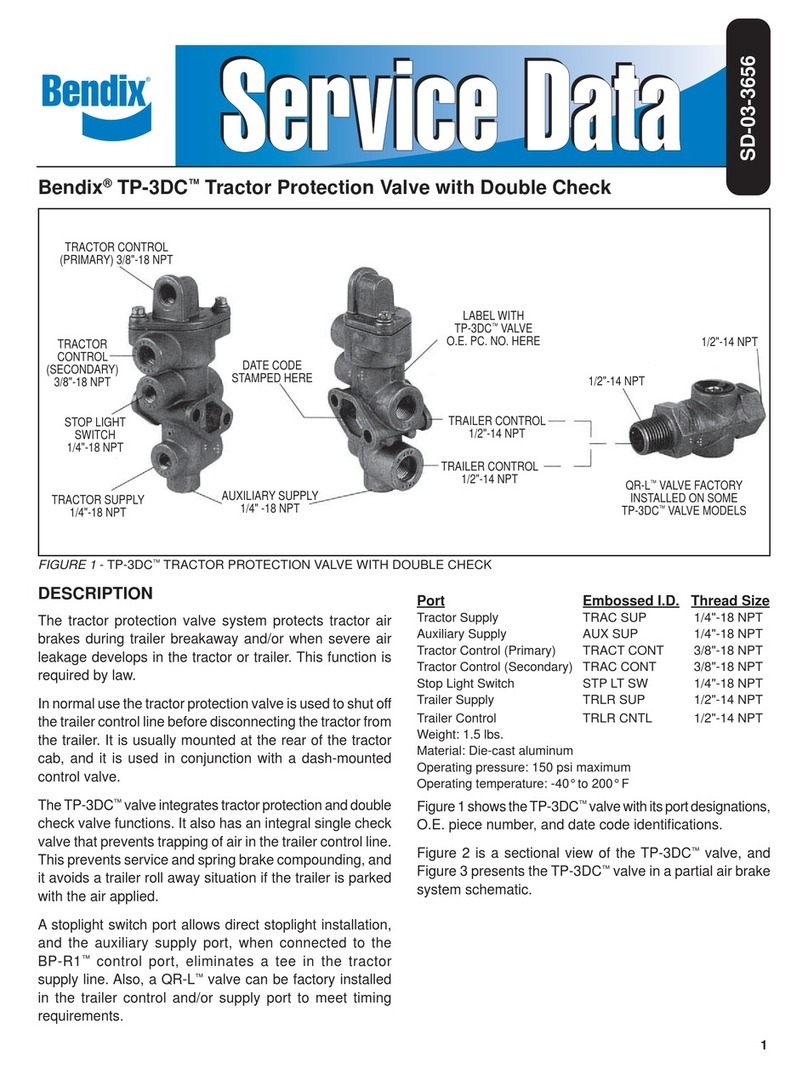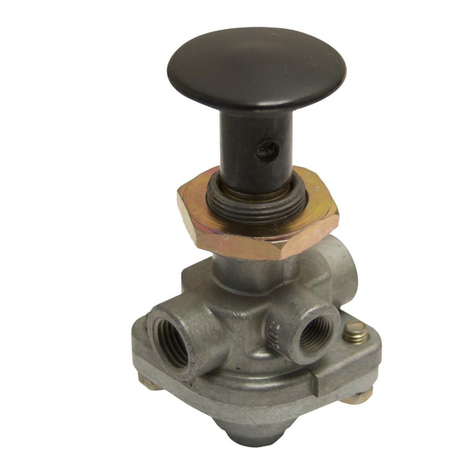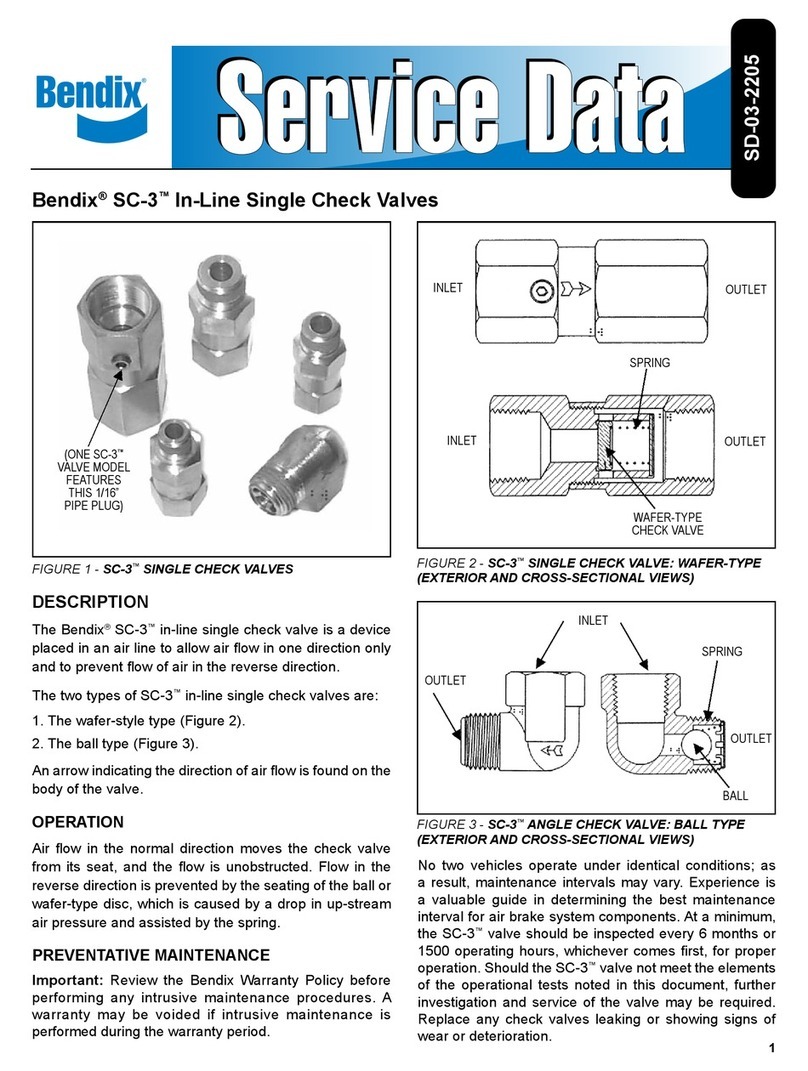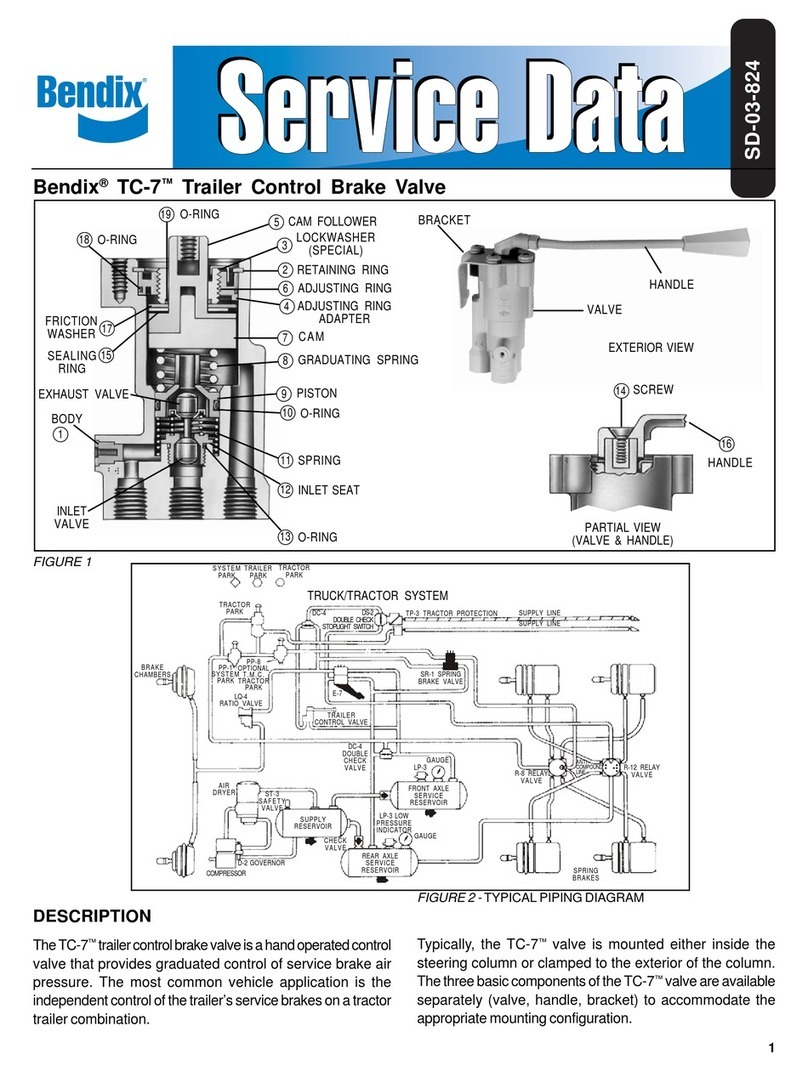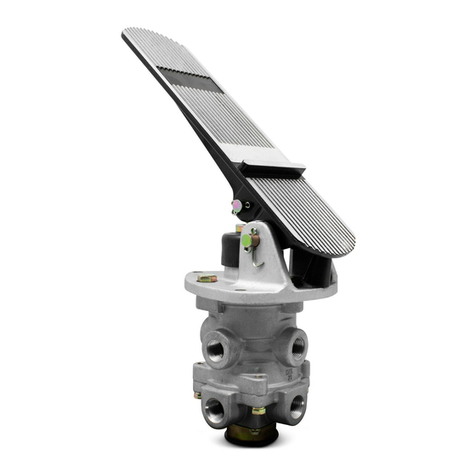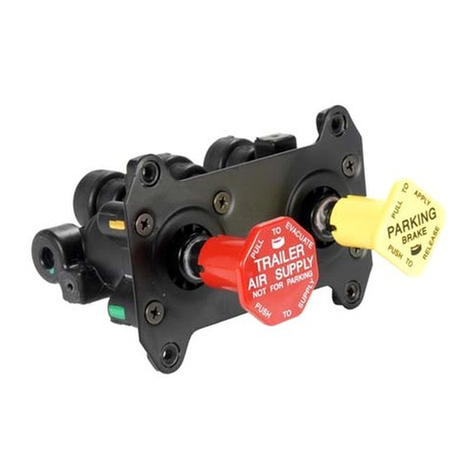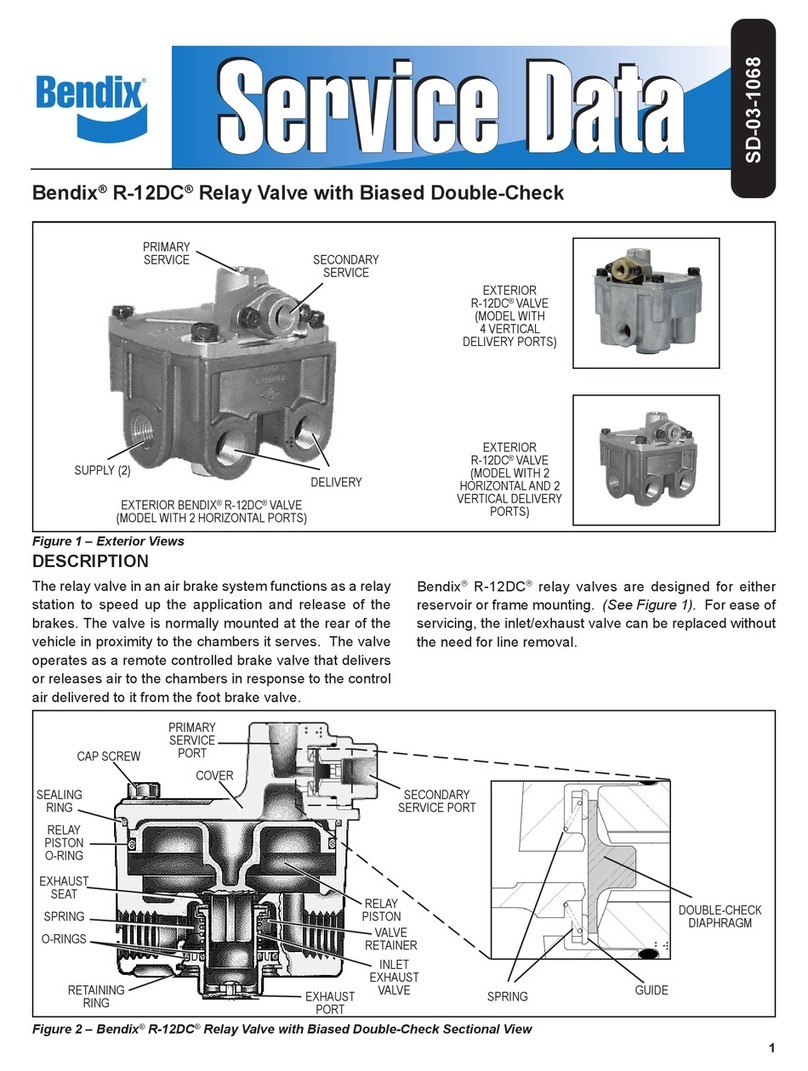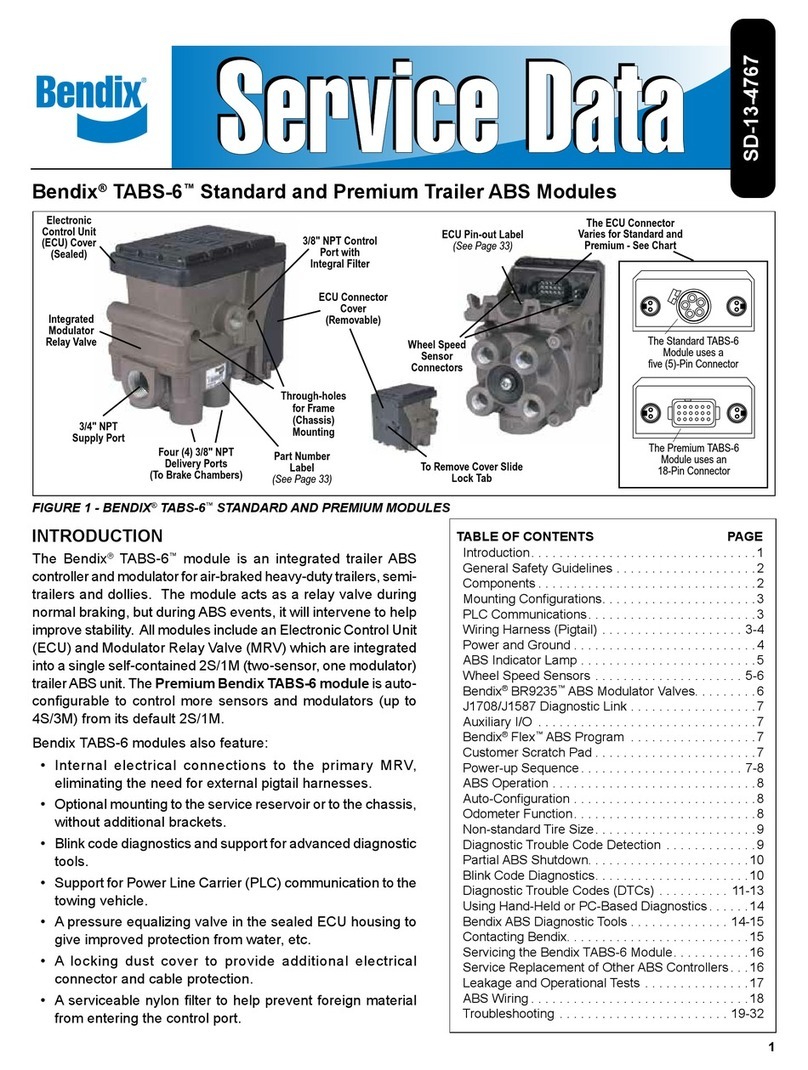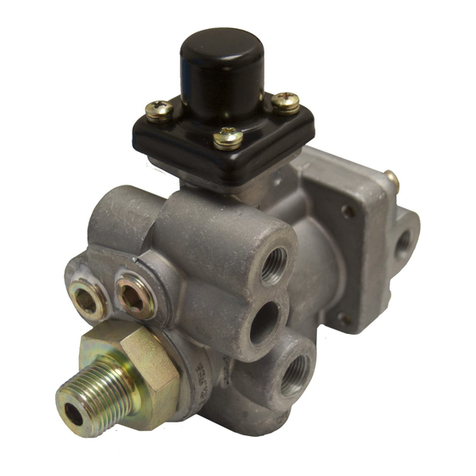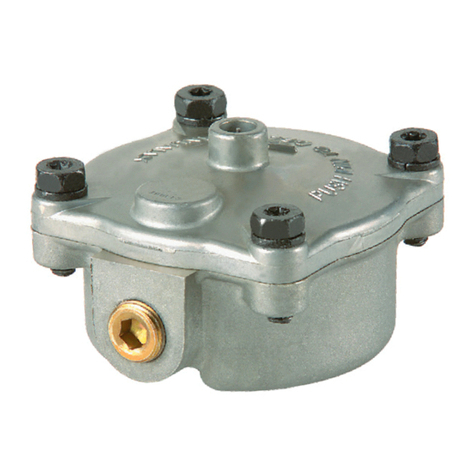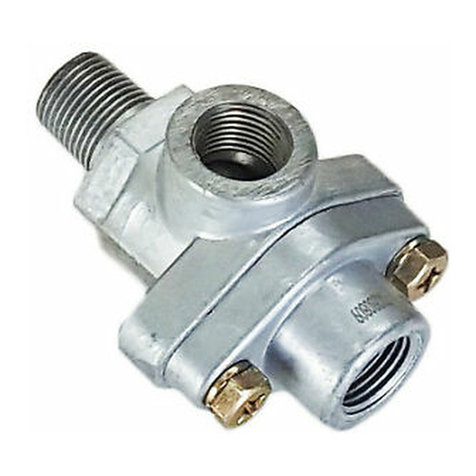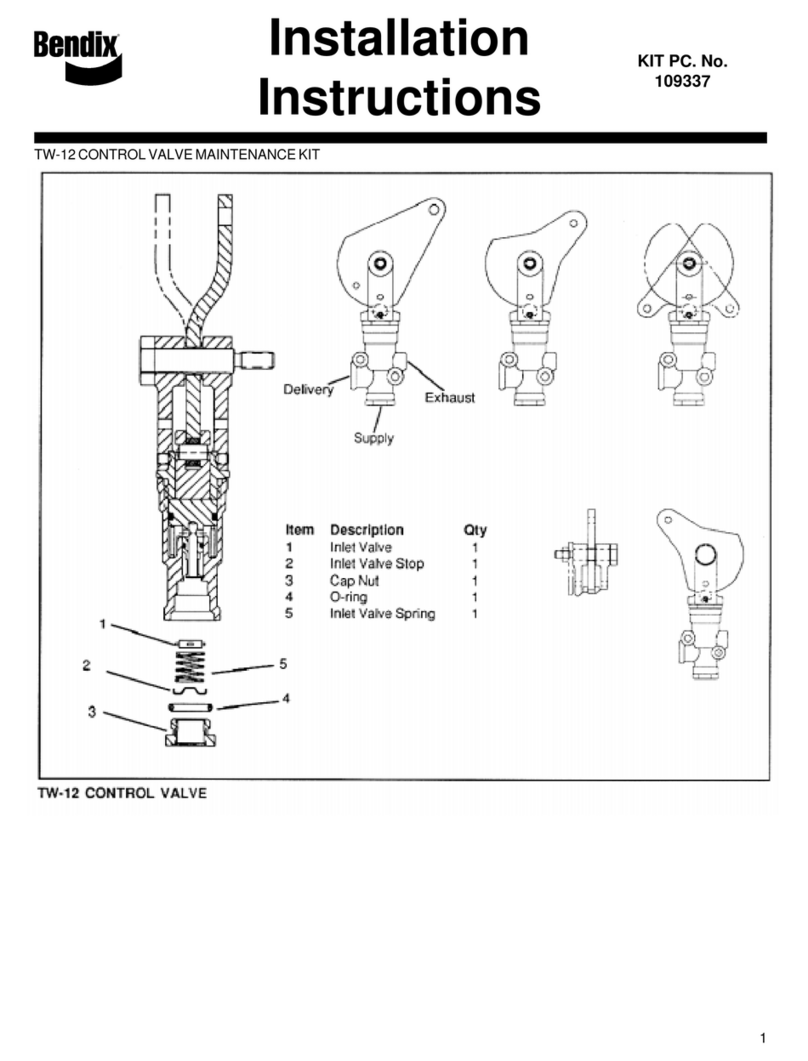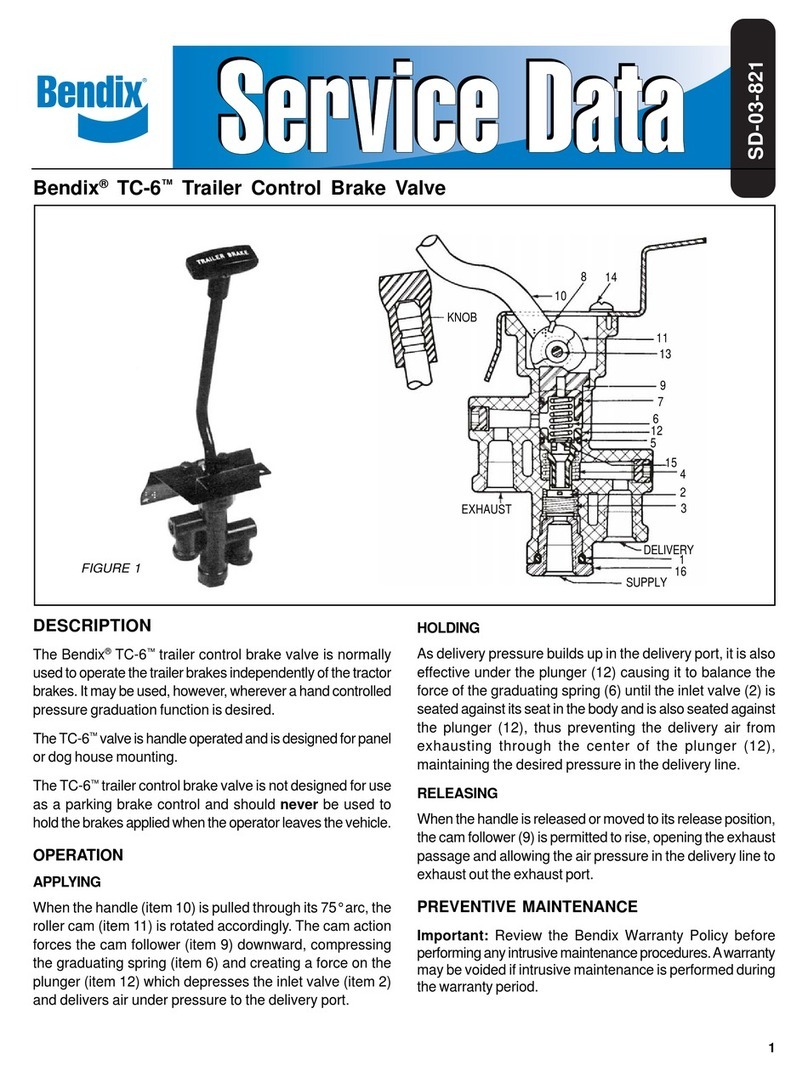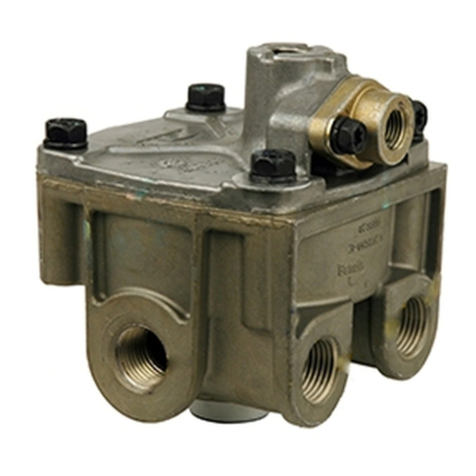
3
5. With 120psi applied to the supply and return ports
simultaneously,applyasoapsolutionaroundtheplunger
andcamfollowerintheyoke assembly. Leakageshould
not exceed a 1” bubble in less than 5 seconds (100
SCCM).
If the TW-12™valve does not function as described or if
excessiveleakage isdetected, itis recommended that it be
replacedwith agenuine Bendix®service replacement.
PREVENTIVE MAINTENANCE
Important: Review the Bendix Warranty Policy before
performinganyintrusivemaintenanceprocedures. Awarranty
maybe voided ifintrusive maintenanceis performed during
thewarranty period.
No two vehicles operate under identical conditions, as a
result, maintenance intervals may vary. Experience is a
valuableguideindetermining thebestmaintenance interval
for system components.At a minimum the TW-12™valves
shouldbeinspectedevery6monthsor1500operatinghours,
whichevercomes first.
1. ChecktheTW-12™controlvalve forproperoperation.
2. Inspecttheexterior ofthe valve forsigns ofleakage and
any apparent physical damage.
3. Inspect the control cable and its connection point to the
levercamfor damage andwear.
Ifthe TW-12™controlvalve doesnot functionas required or
if leakage excessive, wear, or damage is noted during
inspection,replacethevalvewith a genuineBendix®service
replacementunit.
GENERAL SAFETY GUIDELINES - WARNING!
PLEASE READ AND FOLLOW THESE
INSTRUCTIONS TO AVOID PERSONAL
INJURY OR DEATH:
Whenworkingonoraroundbrakesystemsandcomponents,
the following precautions should be observed at all times:
1. Park the vehicle on a level surface, apply the parking
brakes, and always block the wheels. When working
aroundorunder thevehicle,stoptheengineandremove
the key from the ignition. Always keep hands away
from chambers as they may apply as system pressure
drops. Always wear safety glasses.
2. When working in the engine compartment, the engine
should be shut off and the ignition key should be
removed. Wherecircumstancesrequirethattheengine
be in operation, EXTREME CAUTION should be used
to prevent personal injury resulting from contact with
moving,rotating,leaking, heated orelectricallycharged
components.
3. Do not attempt to install, remove, disassemble or
assemble a component until you have read and
thoroughly understand the recommended procedures.
Use only the proper tools and observe all precautions
pertaining to the use of those tools.
4. Following the vehicle manufacturer’s recommended
procedures,deactivatetheelectricalsysteminamanner
thatsafelyremovesallelectricalpower from the vehicle.
5. Ifthevehicleisequippedwithanairoverhydraulicbrake
system or any auxiliary pressurized air system, make
certaintodrainthe air pressurefromallreservoirsbefore
beginning ANY work on the vehicle. If the vehicle is
equipped with an AD-IS®air dryer system or a dryer
reservoirmodule,be sureto drainthepurge reservoir.
6. Never connect or disconnect a hose or line containing
pressure; it may whip. Never remove a component or
pipe plug unless you are certain all system pressure
hasbeen depleted.
7. Neverexceedmanufacturer’s recommended pressure.
8. Never attempt to disassemble a component until you
havereadandunderstandallrecommendedprocedures.
Some components contain powerful springs and injury
canresultifnotproperly disassembled. Useonlyproper
tools and observe all precautions pertaining to use of
those tools.
9. Use only genuine Bendix®replacement parts,
components and kits.
A. Use only components, devices and mounting and
attaching hardware specifically designed for use
in hydraulic brake systems.
B. Allreplacementhardware,tubing,hose,fittings,etc.
must be of equivalent size, type and strength as
theoriginal equipment.
10. Components with stripped threads or damaged parts
shouldbereplacedrather than repaired.Donotattempt
repairsrequiringmachiningorweldingunlessspecifically
stated and approved by the vehicle and component
manufacturer.
11. Priorto returningthevehicle to service,make certain all
components and systems are restored to their proper
operatingcondition.
VALVE REMOVAL
1. Parkthevehicle onalevel surfaceandblock thewheels
and/orhold the vehicle by meansother thanthe service
brakes.
2. Remove pressure from the vehicle service and parking
brake system. In the case of a hydraulic brake system
consult the vehicle manual for proper procedures to be
followed.
3. Identify and mark or label all lines and their respective
connectionsonthevalve to facilitateeaseofinstallation.
